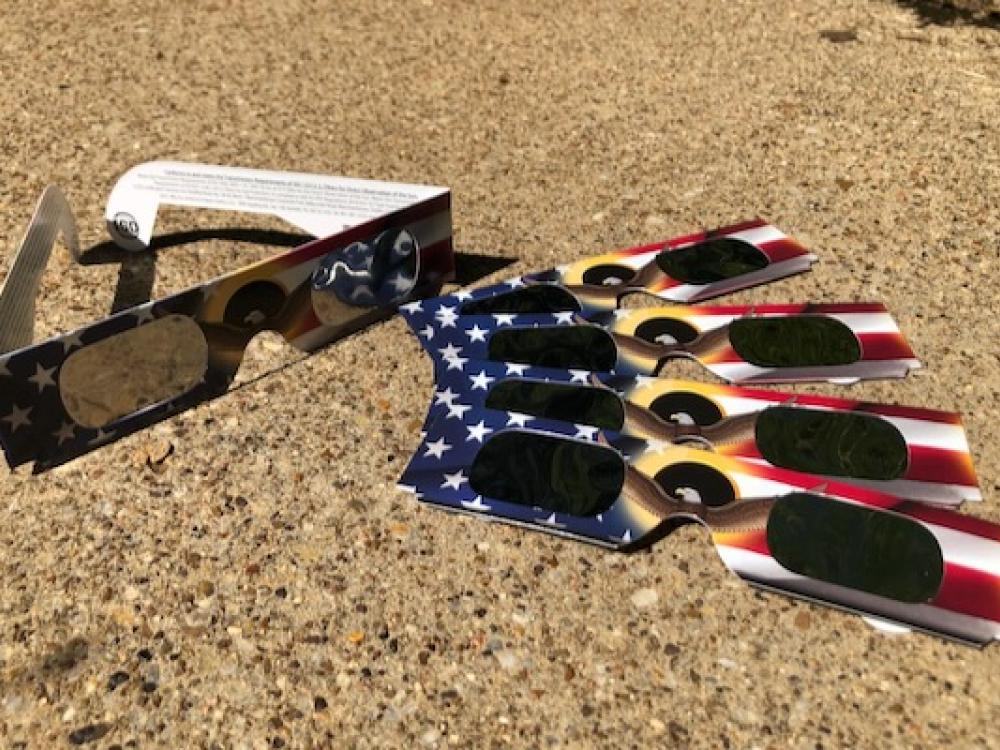
DFW will experience more than 80 percent coverage of the solar eclipse on Oct. 14. Photo by Karl Thibodeaux.
Oct. 12, 2023
While many North Texans are already making plans for the total solar eclipse next April in Texas, this weekend, we’ll experience a trial run.
A partial solar eclipse will occur in DFW on Saturday, Oct. 14, with maximum coverage of the Sun around 11:52 a.m.
While Saturday's event won't be a total solar eclipse, there will be a bit of celestial drama due to an effect known as the "Ring of Fire."
ECLIPSE 101
A solar eclipse happens when the Moon passes between the Sun and Earth, casting a shadow on Earth that either fully or partially blocks the Sun’s light in some areas.
This only happens occasionally, because the Moon doesn't orbit in the exact same plane as the Sun and Earth do. The time when they are aligned is known as eclipse season, which happens twice a year, according to NASA.
Those located in the path of the Moon’s shadow as it races across the Earth, experience the maximum coverage. On Saturday, Odessa, San Angelo, San Antonio and Corpus Christi will be in the path of the eclipse. North Texas will experience about 80 to 85 percent coverage.
This animation shows the process of the annular eclipse across Texas in October. Courtesy of the Great American Eclipse.
RING OF FIRE
There are two kinds of eclipses — total and annular.
During a total eclipse, those in the path of totality witness 100 percent coverage of the Sun. There will be a total eclipse in Texas in April 2024.
During an annular eclipse, the Moon is farther from the Earth, making it appear smaller. As a result, the Sun’s outer edge is not completely blocked, creating a “ring of fire” around it. The eclipse on Saturday will be an annular eclipse.
An annular eclipse explained. Courtesy of NASA.
The Date & Time website offers this sequence for the 2023 eclipse in Dallas:
• Begins at 10:23 a.m. — outer lunar shadow touches the solar face
• Maximum at 11:52 a.m. — solar face is covered as much as possible
• Ends at 1:29 p.m. — outer lunar shadow exits the solar face
The Fort Worth 2023 eclipse sequence starts and ends only one minute earlier.
Without eclipse glasses, which allow you to look at the Sun without permanently burning your retina, it will be unnoticeable to most since plenty of sunlight still escapes.
The show is not just in the sky, but in the light effects on Earth.
The solar eclipse creates dazzling crescent sun shadows.
Partial eclipse shadows in Fort Worth in 2017. Video by Jen Schultes.
EYE SAFETY
According to NASA, partial or annular solar eclipses are different from total solar eclipses — there is no period of totality when the Moon completely blocks the Sun's bright face. Therefore, during partial or annular solar eclipses, it is never safe to look directly at the eclipse without proper eye protection.
When watching a partial or annular solar eclipse, you must look through safe solar viewing glasses (“eclipse glasses”) or a safe handheld solar viewer at all times. Eclipse glasses are not regular sunglasses. Regular sunglasses, no matter how dark, are not safe for viewing the Sun. Here's the American Astronomical Society's list of safe suppliers of solar viewers and filters.
Eclipse glasses can be purchased on Amazon, the Great American Eclipse website as well as at Tom Thumb and Home Depot (Call ahead).
During partial or annular solar eclipses, it is never safe to look directly at the eclipse without proper eye protection.
Do not use eclipse glasses or handheld viewers with cameras, binoculars or telescopes. More safety tips.
PINHOLE PROJECTOR
 A cardboard mailing tube serves as a pinhole projector. Photo by Julie Thibodeaux.
A cardboard mailing tube serves as a pinhole projector. Photo by Julie Thibodeaux.
If you don’t have eclipse glasses or a handheld solar viewer, you can use an indirect viewing method, which does not involve looking directly at the Sun.
One way is to use a pinhole projector, which has a small opening (for example, a hole punched in an index card) and projects an image of the Sun onto a nearby surface. With the Sun at your back, you can then safely view the projected image.
Do not look at the Sun through the pinhole!
To view it safely, follow these tips from NASA and the American Astronomical Society.
RESOURCES
Safe Solar Viewers and Filters
RELATED ARTICLES
Two solar eclipses to be viewable in Texas
North Texas will see partial solar eclipse on Monday
Solar eclipse brings out creativity in North Texans
Eclipsestock! North Texas writer witnesses totality in Nebraska
Stay up to date on everything green in North Texas, including the latest news and events! Sign up for the weekly Green Source DFW Newsletter! Follow us on Facebook,Twitter and Instagram. Also check out our podcast The Texas Green Report, available on your favorite podcast app.









